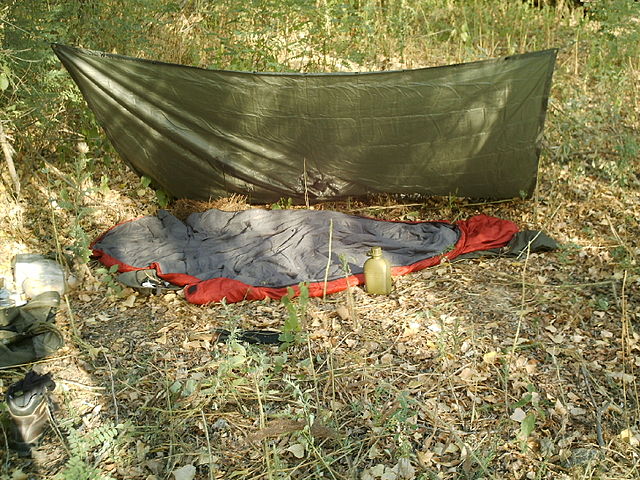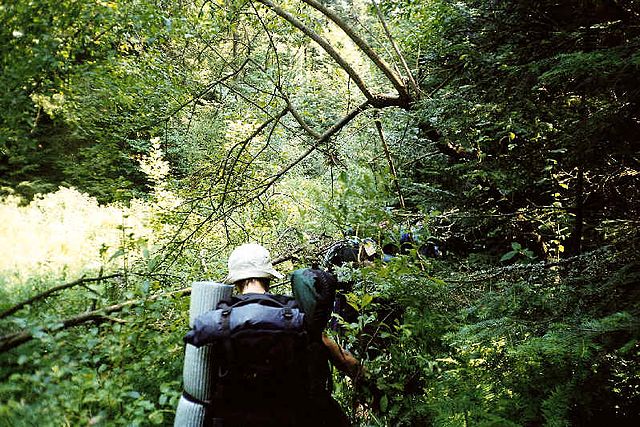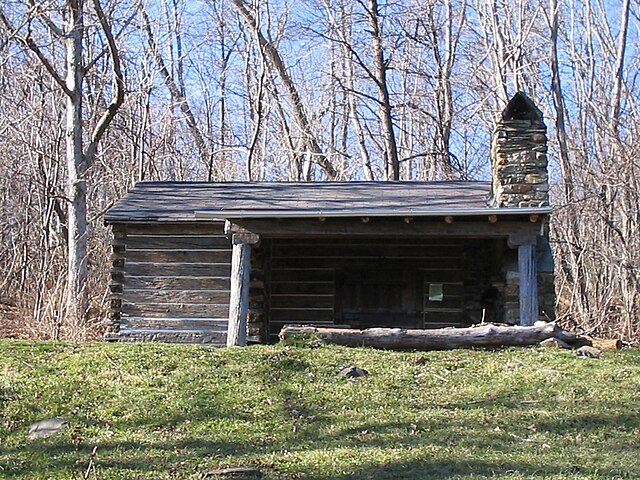Ultralight backpacking is a style of lightweight backpacking that emphasizes carrying the lightest and least amount of gear. While no technical standards exist, some hikers consider "ultralight" to mean an initial base weight of less than 4.5 kg (9.9 lb). Base weight is the weight of a fully loaded backpack at the start of a trip, excluding worn weight and consumables such as food, water, and fuel. Base weight can be lowered by reducing the weight of individual items of gear, or by choosing not to carry that gear. Ultralight backpacking is most popular among thru-hikers.
A bivouac (using a bivy sack) in winter at Benediktenwand, Germany
Poncho shelter
Many ultralight backpackers use a non-freestanding system where the trekking pole serves as the structure for the tent.
A 1.5 L (1.6 US qt) bottle of water weighing 1.5 kg (3.3 lb)
Backpacking is the outdoor recreation of carrying gear on one's back while hiking for more than a day. It is often an extended journey and may involve camping outdoors. In North America, tenting is common, where simple shelters and mountain huts, widely found in Europe, are rare. In New Zealand, hiking is called tramping, and tents are used alongside a nationwide network of huts. Hill walking is equivalent in Britain, though backpackers make use of a variety of accommodation, in addition to camping. Backpackers use simple huts in South Africa. Trekking and bushwalking are other words used to describe such multi-day trips.
Backpacking in the Beskid Niski mountains, in the Polish part of the Carpathian Mountains
Backpacking in the Grand Teton National Park, Wyoming
Trekking route 14 in Zerfenti (Ethiopia)
The Pocosin cabin along the Appalachian trail in Shenandoah National Park








